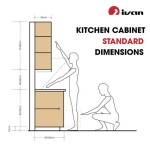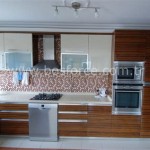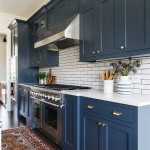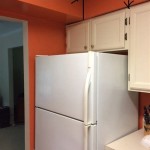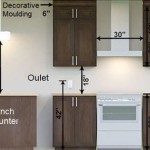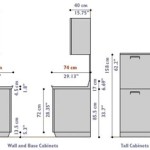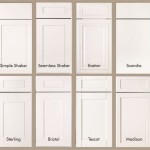Basement Kitchen Cabinets: Maximizing Storage and Style in Your Below-Grade Space
Basements offer homeowners a wealth of untapped potential. Converting a basement into a functional living space, often including a kitchen, adds significant value and expands living area. A key component of a successful basement kitchen design is the cabinetry. Choosing the right basement kitchen cabinets requires careful consideration of the unique challenges and opportunities presented by this below-grade environment.
Key Considerations for Basement Kitchen Cabinets
Several factors distinguish basement cabinet selection from above-ground installations. These considerations play a crucial role in ensuring the longevity and functionality of the cabinets.
*
Moisture Resistance:
Basements are inherently more susceptible to moisture issues than other areas of the house. Proper waterproofing and ventilation are essential, but cabinets should also be chosen with moisture resistance in mind. Solid wood, especially certain species like cedar or redwood, can be a good choice, but proper sealing is critical. Thermofoil or vinyl-wrapped cabinets offer excellent moisture resistance and are often a more budget-friendly option. *Durability:
Basements often serve as multi-purpose spaces, potentially subjected to heavier use and wear. Cabinets should be constructed from durable materials and feature robust hardware to withstand this increased activity. *Style and Aesthetics:
The style of the cabinets should complement the overall basement design and create a cohesive and inviting space. Consider the existing or planned décor, lighting, and overall ambiance when selecting cabinet styles and finishes.Material Selection for Basement Kitchen Cabinets
Cabinet material selection significantly impacts durability, moisture resistance, and the overall aesthetic of the basement kitchen.
*
Solid Wood:
Solid wood cabinets offer a classic and timeless look, with various species offering different levels of moisture resistance. Proper sealing and finishing are essential for protecting solid wood cabinets in a basement environment. *Plywood:
Plywood is a strong and stable engineered wood product that offers good moisture resistance when properly sealed. It's often used for cabinet boxes, even when the doors and drawer fronts are made of a different material. *Medium-Density Fiberboard (MDF):
MDF is a cost-effective option that provides a smooth surface for painting or laminating. However, it's more susceptible to moisture damage than solid wood or plywood and requires careful sealing. *Thermofoil or Vinyl-Wrapped:
These options offer excellent moisture resistance and are easy to clean, making them a practical choice for basements. They are available in a wide range of styles and colors.Ventilation and Moisture Control
Proper ventilation and moisture control are paramount for preventing damage to basement kitchen cabinets, regardless of the chosen material. These measures protect the investment and ensure the longevity of the cabinetry.
*
Dehumidifiers:
Running a dehumidifier helps regulate humidity levels in the basement, minimizing the risk of moisture damage to cabinets. *Proper Ventilation:
Adequate ventilation helps prevent the buildup of moisture and musty odors. Ensure vents are clear and consider installing an exhaust fan. *Waterproof Flooring:
Waterproof flooring protects the subfloor and helps prevent moisture from migrating upwards and affecting cabinets.Maximizing Storage Space in a Basement Kitchen
Basement kitchens often require creative storage solutions to maximize the available space. Careful planning ensures efficient use of the area and creates a functional and organized kitchen.
*
Custom Cabinetry:
Consider custom cabinetry to optimize space utilization and address specific storage needs. Custom designs can accommodate unique dimensions and incorporate specialized storage features. *Open Shelving:
Open shelving can create a sense of spaciousness and provide easy access to frequently used items. However, keep in mind that open shelving requires more frequent cleaning and organizing. *Corner Cabinets:
Corner cabinets can maximize storage in often-underutilized areas. Utilize features like lazy susans or pull-out shelves to enhance accessibility.Lighting and Aesthetics
Lighting plays a crucial role in enhancing the functionality and ambiance of a basement kitchen. Proper lighting accentuates the cabinetry and creates a welcoming environment.
*
Under-Cabinet Lighting:
Under-cabinet lighting provides task lighting for food preparation and accentuates the beauty of the countertops and backsplash. *Recessed Lighting:
Recessed lighting provides general illumination and can brighten up a basement kitchen, especially in areas with limited natural light. *Pendant Lighting:
Pendant lighting over an island or peninsula can add a touch of style and create a focal point in the basement kitchen.Budgeting for Basement Kitchen Cabinets
Establishing a realistic budget is crucial before starting a basement kitchen renovation. Cabinetry costs can vary significantly depending on the chosen material, style, and customization level.
*
Material Costs:
Solid wood cabinets are typically more expensive than options like thermofoil or MDF. *Installation Costs:
Factor in professional installation costs, which will depend on the complexity of the project. *Hardware and Accessories:
Budget for hardware, such as knobs, pulls, and hinges, as well as any specialized storage accessories.Planning and Installation
Careful planning and professional installation are crucial for a successful basement kitchen cabinet project. Thorough planning ensures that the finished product meets the homeowner's needs and expectations.
*
Accurate Measurements:
Precise measurements of the basement space are essential for ordering the correct size and configuration of cabinets. *Professional Installation:
Professional installation ensures proper fit and function and can prevent costly mistakes. *Inspection and Adjustments:
After installation, thoroughly inspect the cabinets for any defects or issues and make any necessary adjustments.
Basement Or Bonus Room Kitchenette Kitchen Design

Plan 73345hs 3 Bed Storybook House With First Floor Master Basement Kitchen Apartment Small

20 Basement Kitchenette Ideas With Detailed Guideline

13 Things To Consider For A Basement Kitchen And Avoid Costly Mistakes Decor Cabinets

9 Brilliant Basement Kitchen Ideas Harmony Basements

Basement Kitchenette Design Ideas

Basement Kitchenette Bar Designs Plans

Modern Basement Kitchen Reveal 4 Tips To Decorate A Lemon Thistle

Krason Basement Kitchen Reveal House Of Jade Interiors

8 Benefits Of Adding A Kitchen To Your Basement Remodel
Related Posts


